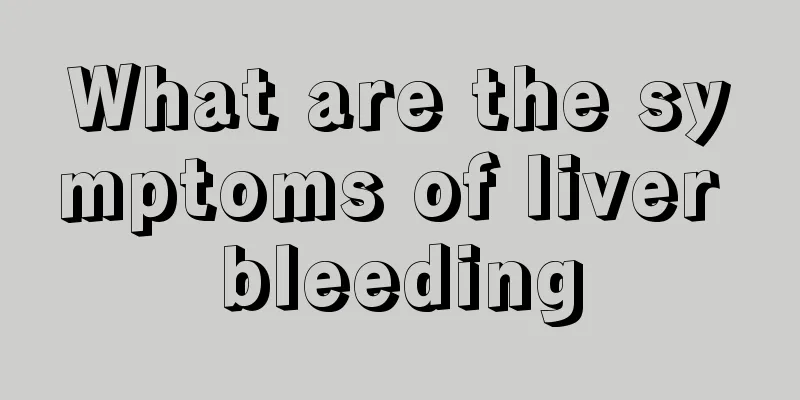What are the early symptoms of colon cancer

|
Nowadays, the incidence of colon cancer is getting higher and higher, and it tends to be younger. The occurrence of this disease is mainly related to our daily diet. As people's pace of life accelerates, regular diet seems to have become a luxury, so the arrival of the disease follows closely. So, what are the early symptoms of colon cancer? Let's find out together. Colon cancer is a common malignant tumor of the digestive tract that occurs in the colon. It often occurs at the junction of the rectum and the sigmoid colon. The incidence rate is highest in the 40 to 50 year old age group, and the incidence rate ranks third among gastrointestinal tumors. 1. Changes in bowel habits: Right-sided colon cancer manifests itself as early thin stools with pus and blood, and increased bowel movements. When the tumor continues to grow and affects the passage of stool, alternating diarrhea and constipation may occur. Left-sided colon cancer, on the other hand, often manifests as difficulty in defecation, which worsens with the progression of the disease. In addition, if the tumor is located lower, there may also be difficulty in defecation and a feeling of tenesmus. 2. Digestive tract symptoms: manifested as abdominal distension, discomfort or indigestion-like symptoms. In the case of right-sided colon cancer, most cases are abdominal pain or dull pain. It may be intermittent at first, then become continuous, often located in the right lower abdomen, much like a chronic appendicitis attack. In the case of left-sided colon cancer, most cases are sudden obstruction, abdominal cramps, accompanied by abdominal distension, hyperperistalsis, constipation and obstructed gas discharge, or chronic obstructive symptoms such as abdominal distension, paroxysmal abdominal pain, hyperactive bowel sounds, constipation, blood and mucus in stool, etc. 3. Symptoms of poisoning: Early symptoms of colon cancer also include anemia, low fever, fatigue, weight loss, edema, etc., especially anemia and weight loss. 4. Abdominal masses: About 50% of patients may find abdominal masses, which are cancerous tumors or tumors that have infiltrated and adhered to the omentum and surrounding tissues. They are hard and irregular in shape. Some masses may have a certain degree of mobility along the intestinal tract, while in advanced colon cancer, the masses may be fixed due to severe cancer infiltration. 5. Blood or mucus in stool: In right-sided colon cancer, the amount of bleeding is small and is fully mixed with stool due to the peristalsis of the colon, making it difficult to see with the naked eye, but the occult blood test is often positive. In left-sided colon cancer, the bleeding and mucus are not mixed with stool, and about 1/4 of patients can observe blood and mucus in their stool with the naked eye. Colon cancer is a wasting disease, and it is common for cancer patients to have a declining immune system. In daily life, patients should pay attention to proper nutrition, try to diversify their food, eat more high-protein, low-animal fat, easily digestible food, and match coarse and fine grains to ensure nutritional balance. |
<<: What are the common treatments for lung cancer
>>: What is the cause of fibroids
Recommend
What is the cause of a child's penis swelling and pain
When boys are young, they are very curious and in...
How to care for primary liver cancer in late stage? Three points to keep in mind when caring for primary liver cancer in late stage
The liver is one of the most important organs in ...
The efficacy of soaking feet with mugwort and ginger
Mugwort is a common Chinese medicinal material. S...
What is the best way to treat night cough
I don’t know if you have ever encountered this si...
How can breast massage promote milk secretion?
After experiencing a painful childbirth, breastfe...
Why do acne appear on the chin
Many people who often stay up late or play with t...
What to do if there is paint smell in the renovation next door
Usually when we are doing home decoration, the sm...
Expose which dirty things you must never do
Barefoot fitness: The survey found that 32% of pe...
What should I do if my brain is ischemic and hypoxic?
Cerebral ischemia and hypoxia are common in prema...
I felt nauseous and vomited a few days after gastric cancer surgery
Patients with gastric cancer may experience nause...
Bone protrusion on one side of the cervical spine
The protrusion of the cervical bones behind the n...
Dizzy and dazed
When talking about dizziness and blurred vision, ...
What to eat to get fat_How to eat to get fat
Many people now want to lose weight because they ...
How are urethral stones formed
Urethral stones are one of the most common urolog...
How to self-diagnose colon cancer? 5 signs that colon cancer is coming to you
Generally speaking, if there is a tumor in the in...









